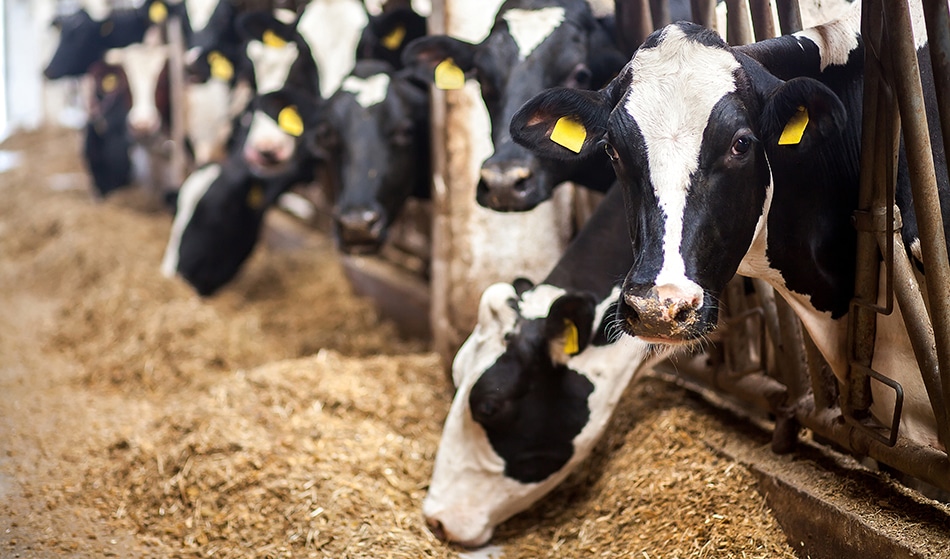AOAC 2006.06 Yeast and Mold Detection in Feed Products
The AOAC International method 2006.06 is a standardized protocol used for the detection of yeast and mold in feed products, which are critical components in the agricultural and animal feed industries. This method ensures that feed products meet quality standards by identifying potential contaminants such as molds and yeasts that could compromise nutritional value or pose health risks to livestock.
Contamination from molds and yeasts can lead to a decline in feed palatability, nutrient availability, and overall feed quality. Moreover, some fungi produce mycotoxins, which are toxic compounds harmful to both animals and humans. Ensuring the absence of such contaminants is essential for maintaining animal health and preventing potential contamination downstream at farms or processing plants.
The AOAC 2006.06 method involves several steps that together provide a robust evaluation of feed samples. Initially, the sample preparation process includes homogenization to ensure uniform distribution of organisms within the sample. Afterward, dilutions are prepared and plated onto selective media for mold growth, followed by incubation under controlled conditions.
The identification of yeast and mold colonies on these plates is performed using visual inspection and microscopic examination where necessary. Species-level differentiation may be required based on colony morphology, color, size, and other characteristics observed during the incubation period. This step-by-step approach ensures accurate quantification and identification of contaminants present in feed products.
The significance of this method extends beyond mere detection; it supports regulatory compliance with international standards such as ISO and EU directives on food safety. By adhering to these methods, laboratories ensure that their results are consistent and reliable across different locations and batches, thus building trust among clients.
Compliance is a key aspect when dealing with agricultural feed products due to the stringent requirements set forth by various regulatory bodies worldwide. For instance, the European Union has strict regulations governing the use of additives in animal feeds to prevent contamination from harmful organisms like Aspergillus flavus or Fusarium species known for producing potent mycotoxins.
Implementing AOAC 2006.06 helps companies stay ahead in terms of product quality and safety, thereby enhancing their reputation among consumers who are increasingly concerned about the integrity of food sources. Additionally, it fosters better relationships with suppliers by establishing clear expectations regarding feed quality standards.
Applied Standards
The AOAC 2006.06 method is widely recognized and applied in accordance with international standards such as ISO 11299-3, which provides guidelines for the enumeration of molds in animal feedstuffs using culture methods. This standard ensures that laboratories performing these tests follow best practices aligned with global norms.
Other relevant standards include those from the European Committee for Standardization (CEN) and the International Organization for Standardization (ISO). These organizations contribute to setting common benchmarks across Europe and globally, ensuring consistency in testing procedures and results interpretation. Compliance with these standards not only enhances credibility but also facilitates international trade by providing harmonized approaches.
Moreover, local regulations often reference or require adherence to AOAC methods like 2006.06 for specific sectors including agricultural feed manufacturing. Adherence helps companies meet regulatory requirements while demonstrating commitment towards maintaining high-quality products.
Competitive Advantage and Market Impact
Implementing the AOAC 2006.06 method offers numerous benefits that contribute significantly to a company's competitive edge in the agricultural feed market:
- Quality Assurance: Ensures consistent product quality by identifying potential contaminants early in the production process.
- Regulatory Compliance: Helps companies meet stringent regulatory requirements, thereby avoiding costly penalties and ensuring smooth operations.
- Customer Trust: Establishes trust with customers who value transparency and reliability in feed safety practices.
- Innovation Support: Provides accurate data that supports ongoing research and development efforts aimed at improving feed formulations.
Beyond immediate business advantages, this method plays a crucial role in protecting public health by preventing the spread of harmful microorganisms through contaminated feeds. This proactive approach contributes to broader societal benefits, reinforcing the company's responsibility towards sustainable agriculture practices.
Use Cases and Application Examples
The AOAC 2006.06 method finds extensive application in various scenarios within the agricultural sector:
- Feed Manufacturing: Used during quality control checks to ensure that raw materials meet specified criteria before processing.
- R&D Projects: Employed by researchers exploring new feed formulations or studying the effects of different additives on microbial growth.
- Supplier Audits: Conducted periodically to verify supplier compliance with established quality standards for feed ingredients.
- Certification Programs: Integrated into certification schemes ensuring product safety and reliability, which is crucial in gaining market access.
In summary, the AOAC 2006.06 method plays a pivotal role in maintaining high standards of feed quality across diverse applications within agricultural industries.





